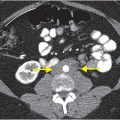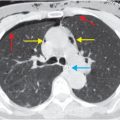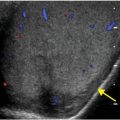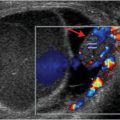Diagnosis: Monteggia fracture–dislocation
Frontal radiograph of the forearm demonstrates a displaced mid ulnar diaphyseal fracture (yellow arrow), with anterior dislocation of the radial head (red arrow). The radius is partially obscured by overlying trauma board.
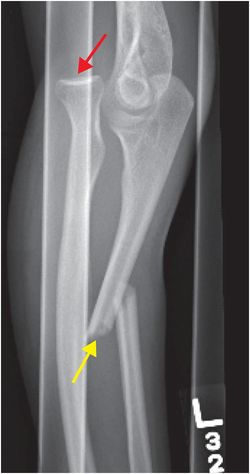
Discussion
Overview and mechanism of Monteggia fracture–dislocation
A Monteggia fracture–dislocation is the combination of an ulnar fracture with radiocapitellar dislocation, commonly due to posterolateral direct impact onto a hyperextended forearm.
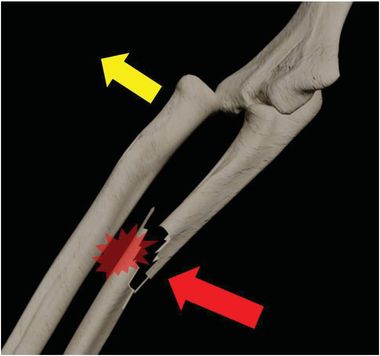
Impact on the proximal ulna (red arrow) with the arm in hyperextension causes fracture of the ulnar diaphysis and anterior dislocation of the radial head (yellow arrow), consistent with a Monteggia fracture–dislocation, Bado type I.
Classification of Monteggia fracture–dislocation
Monteggia fracture–dislocations are classified according to the Bado system, which distinguishes injuries based on direction of dislocation, angulation of fracture fragments, and the presence of an associated radius fracture.
Type I: fracture of the proximal or middle third of the ulna with apex anterior angulation and anterior dislocation of the radial head.
Type II: fracture of the proximal or middle third of the ulna with apex posterior angulation and posterior dislocation of the radial head.
Type III: fracture of the proximal ulna with apex medial angulation and lateral dislocation of the radial head.
Type IV: Monteggia fracture–dislocation with a fracture of the radial shaft. Anterior direction of radial head dislocation is typical.
Imaging of Monteggia fracture–dislocation
Radiographs are usually sufficient, though radiocapitellar dislocation can often be overlooked in the presence of a displaced ulnar fracture.
CT is recommended to evaluate for additional fractures when Monteggia-type mechanism is suspected.
Treatment of Monteggia fracture–dislocation
While these injuries have been treated conservatively in the past, recent improvements in surgical technique have shown improved functional outcomes with surgery. Early surgical repair is now the most common treatment strategy for all Monteggia-type lesions.
Stay updated, free articles. Join our Telegram channel

Full access? Get Clinical Tree


